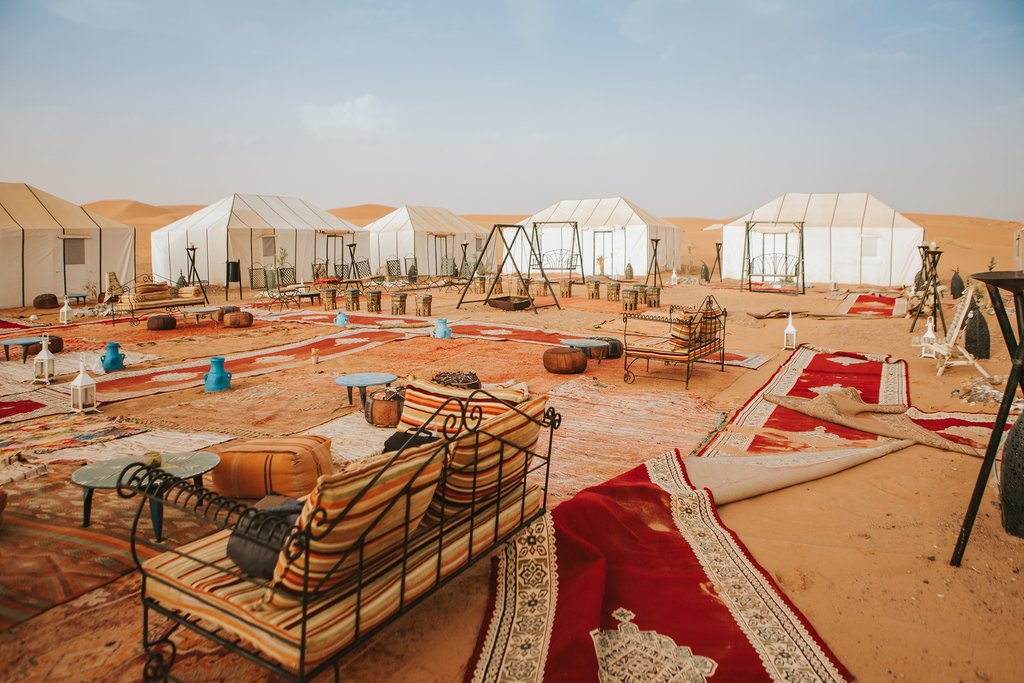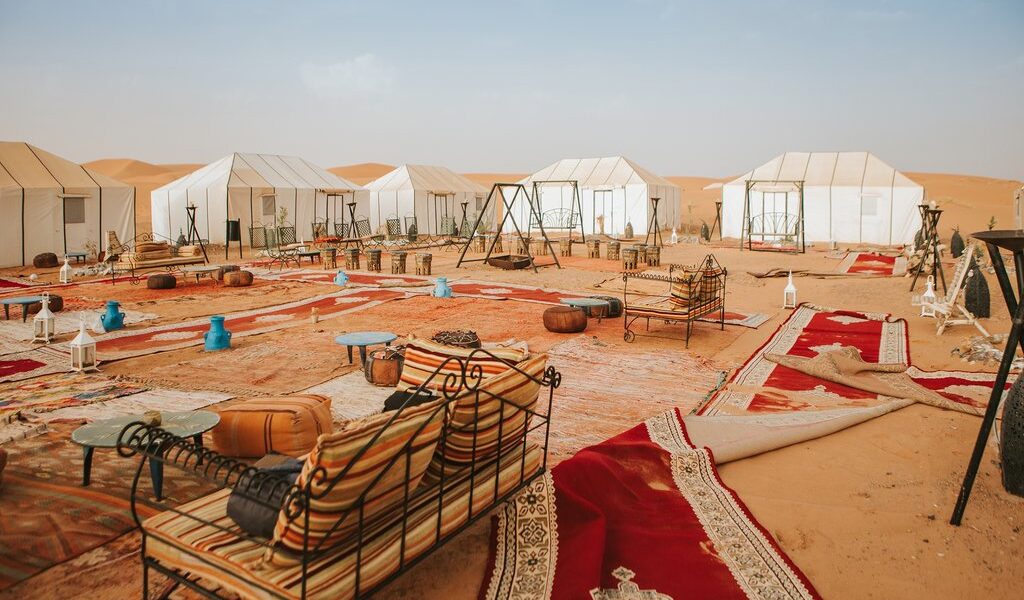
February marks the end of winter in Morocco. In the Sahara Desert, the weather is sunny and dry—great for outdoor activities—with chilly evenings that are ideal for stargazing by an open fire. It’s not a peak travel time, so you won’t encounter major crowds or higher-than-average prices. Find out more about what to expect with this monthly guide to the Sahara Desert in Morocco.
## Exploring the Sahara Desert in Morocco: A February Adventure
The Sahara, a sprawling expanse of sand and sky, reigns as the world’s largest desert, stretching across a considerable portion of the African continent. Given its immense size, the weather conditions naturally present considerable variation across the desert’s diverse subregions. When considering a trip to Morocco, specifically the northwestern edge of the Sahara, February offers a unique blend of comfortable daytime weather and cooler evenings.
During the day in Morocco in February, travelers can anticipate pleasant, sunny conditions with temperatures generally reaching the mid-60s Fahrenheit. These mild temperatures create an ideal environment for exploration and outdoor activities. As the sun dips below the horizon, however, temperatures begin to drop, often reaching the upper 30s. Packing layers is essential to ensure comfort during these temperature fluctuations.
February stands out as one of the driest and sunniest months in this region of the Sahara. Statistically, visitors can expect sunshine on approximately 60% of the days, while the chance of encountering rain is a mere 3%. This abundance of sunshine and minimal rainfall contributes to the appeal of February as a prime time to experience the majestic Moroccan Sahara. The dry air enhances visibility, making it easier to appreciate the breathtaking landscapes.
While Morocco sees peak tourist seasons later in the year, specifically during early autumn, February presents a more tranquil experience in the Sahara. The absence of large crowds, coupled with the favorable weather conditions, makes February a particularly enticing time for a desert adventure. The reduced tourist presence allows for a more intimate and immersive experience.
Planning a trip to the Sahara, regardless of the time of year, necessitates careful consideration of the unique logistical challenges associated with desert travel. Pre-planning is crucial to ensure a seamless and enjoyable journey, ensuring accommodations and transportation within this remote area are handled with consideration. However, in February, you are less likely to encounter inflated prices or fully booked accommodations.
The favorable weather conditions of February make it an ideal time for a variety of activities in the Sahara. A camel trek across the iconic Erg Chebbi dunes offers an unforgettable experience, allowing visitors to immerse themselves in the timeless beauty of the desert landscape. The mild temperatures make hiking through the dunes far more enjoyable than during the scorching summer months.
Exploring the charming desert towns at a relaxed pace is another highlight of a February visit. The pleasant weather eliminates the need to constantly seek shade or shelter, allowing for leisurely strolls and a deeper appreciation of the local culture and architecture.
For photography enthusiasts, Ouarzazate, often referred to as the “Hollywood of Morocco,” presents a treasure trove of world-class photo opportunities. This desert oasis has served as the backdrop for numerous iconic films and television shows. A visit to the Cinema Museum of Ouarzazate provides fascinating insights into the filming of “Lawrence of Arabia” and other notable productions that have utilized this spectacular landscape.
For those seeking winter sports activities, the nearby Atlas mountains offer opportunities for skiing and snowboarding. This provides a unique contrast to the desert landscape and adds another dimension to your Moroccan adventure.
As the sun sets, the clear desert skies transform into a celestial canvas, perfect for stargazing. While the days are slightly shorter than in the spring, summer, or fall, the mild evening temperatures create an ideal setting for relaxing by an open fire and marveling at the brilliance of the stars. The lack of light pollution in the desert enhances the visibility of constellations and celestial phenomena.
Embarking on a journey to the Moroccan Sahara in February promises an unforgettable experience filled with breathtaking landscapes, cultural immersion, and thrilling adventures.
B-1625

